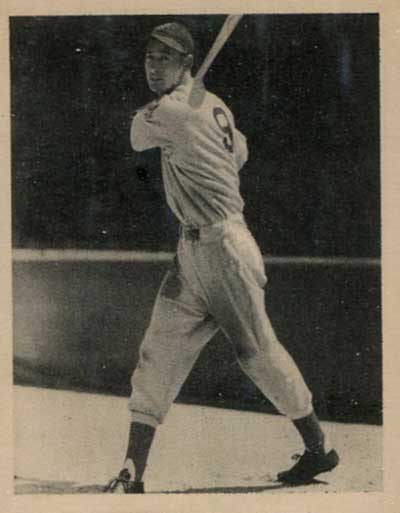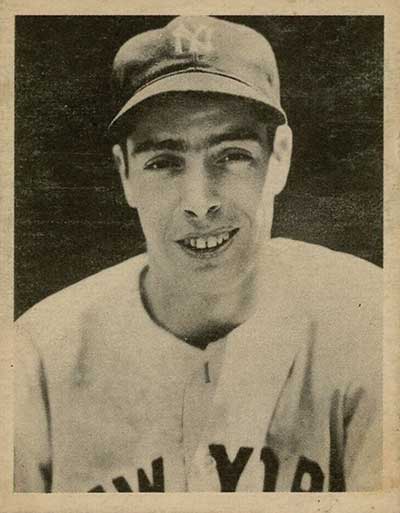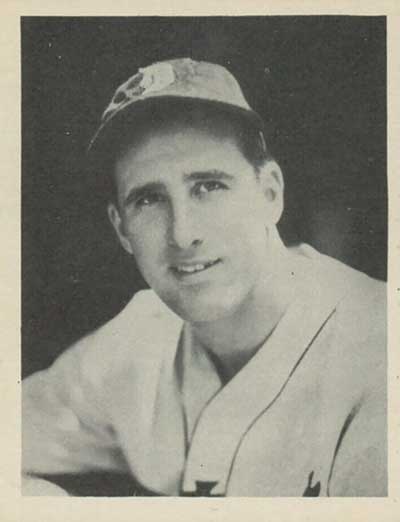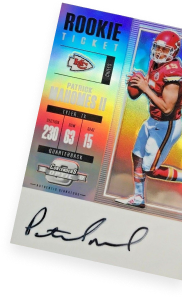1939 Play Ball Baseball: Cards on the Cusp of War
Despite its stranglehold on the baseball card market earlier in the decade, by 1939, Goudey had joined the ranks of others that were no longer producing standard baseball cards. That year, however, a new series of sets claimed the spotlight — 1939 Play Ball Baseball.
Philadelphia-based Gum, Inc. issued the first of a trilogy of baseball card sets with the ‘Play Ball’ title in 1939. Today, the Play Ball sets are widely considered as the final landmark releases of the pre-war era before. Play Ball sets were printed in 1939, 1940, and 1941, before essentially passing the torch to Bowman seven years later.
Ironically enough, the Play Ball cards are somewhat linked to those later Bowman releases. Bowman founder Jacob Warren Bowman first founded Gum, Inc., which distributed the Play Ball sets. After World War II, Bowman returned and established the Bowman-branded baseball cards, which ran into the 1950s. Thus, the 1939-41 Play Ball sets served as a bridge between Goudey’s popular pre-war baseball sets and the start of what is considered the ‘Modern Era’ with the 1948 Bowman set.

1939 Play Ball Baseball: A Different Animal
1939 Play Ball Baseball cards were drastically different than many issues from the 1930s. Many caramel, exhibit, and even some strip cards from the 1920s featured real black and white photographic images of players before color art depictions became the standard in the 1930s. Play Ball’s 1939 set was a throw- back of sorts to that decade, utilizing a slick combination of black and white portrait and action shots.
To some collectors today, the cards have a mundane look. But I suspect a contemporary appeal existed simply because they were different than other gum card releases that preceded them. In addition, with Goudey failing to produce standard sets from 1939-41 (they did create some premium photos in 1939), collectors surely welcomed Play Ball picking up the slack. Play Ball’s inaugural set must have generated some interest as the company saw enough demand to continue the series in 1940 and 1941.
Who Is This?
The most frustrating design aspect with 1939 Play Ball Baseball cards is that the players are not identified on the front with no names accompanying their images. Some of the more famous players are easily recognizable. However, collectors commonly need to check the backs of the cards to determine the players pictured. Backs include a solid biography of each player, a card number, and the Play Ball name.
The set also served as a foundation of sorts for Gum, Inc.’s other two Play Ball releases.
Both the 1940 and 1941 series used many of the same players and even the same poses/images as were found in this initial 1939 offering.
With all due respect to the other notable cards in the set, the headliner is the iconic rookie card of Hall of Famer Ted Williams. Williams’ card, in fact, is arguably the top card in the entire Play Ball series. While the post-career card of Shoeless Joe Jackson in the 1940 edition is comparable in terms of value these days, the fact that the Williams’ card is a rookie makes it a bigger prize for some collectors.

Williams’ card has skyrocketed in value. As recently as a few years ago, low-grade examples were easy to find at under $1,000. Today, however, most start in the $1,500-$2,000 range. The Williams RC has long been viewed as an iconic pre-war collectible, even when it was more affordable. Part of the reason for that could be that it is a clear-cut rookie card of one of the top baseball players from the World War II era.
That is not always a given. Joe DiMaggio, for example, has several cards vying for the RC label, depending on collectors’ interpretation of a true rookie card. Ditto for legendary hurler Bob Feller and slugger Jimmie Foxx, among others that were featured on oddball issues. While Williams does have some other 1939 rookie photo premiums issued by Goudey and World Wide Gum, his 1939 Play Ball Baseball card is a definitive trading card and a clear rookie.

Speaking of DiMaggio, he is the other big fish in this set. While cards of Mel Ott, Moe Berg, and others are certainly desirable, DiMaggio’s is valued significantly higher. Collectors can expect to pay starting prices of $500-$750 for decent low-grade examples.
Missing Card in Set
One of the mysteries in the landmark set is a missing card. High Number card No. 126 is not believed to have ever been issued. Whether or not that was intentional is unclear. The 1933 Goudey set, of course, was famously printed without card no. 106. Most believe that the missing card was intentional as the company sought to boost sales of cards with collectors desperately looking for it. In 1934, Goudey sent a No. 106 – the short-printed Nap Lajoie card, to collectors requesting one.
Could a similar strategy have been employed here with the 1939 Play Ball Baseball set? No one can tell for sure. But the company did not follow in Goudey’s footsteps to later release a No. 126 so today, the full set consists of 161 cards instead of 162.
There are theoretically some exciting prospects when it comes to the missing card. Surely, at the top of the list is Lou Gehrig, who retired in the middle of the 1939 season. Another high-profile card could have been one of the aforementioned Feller, who did not appear in any of the Play Ball sets. Or if Play Ball wanted to follow the Goudey path, they could have also featured a former player as Goudey did with Lajoie. Ironically, the 1940 Play Ball set included a slew of past greats that would have made for nice inclusions here.
Even at 162 cards, the set would have remained technically unfinished, though. Backs of 1939 Play Ball Baseball cards state that there are a total of 250 cards in the series. However, the set concludes with No. 162 and never approached the promise of 250. That number may have been a goal for the 1940 set, which included 240 cards. But in 1939, Play Ball never came close to that promised amount.

As with many gum card releases, high number cards were short-printed in the 1939 Play Ball set and are more difficult to find than the low number cards. Fortunately for collectors wanting to build this set, the high number series (Cards No. 116-162) is mostly devoid of big names. Hall of Famer Earl Averill is the biggest fish here with most others being considered as commons.
Chase the Samples
A fun ‘side quest’ for this iconic set can be the pursuit of its ‘Sample’ cards. These cards are no different than the standard Play Ball cards, save for a red overprint stamp on the back indicating that the card was ‘Free’ and that additional cards could be purchased with three included inside each one-cent package of the Play Ball American Gum product.
These cards are often referred to as ‘salesman sample’ cards, with the idea that they were distributed by salesmen of the gum products. They could have also been given to stores to distribute to customers to entice them to purchase the gum.
For years, the sample cards did not sell for much of a premium over the standard issue cards. But while you can still find common samples for not much more than the standard cards, there has been an uptick in value for sample cards of the star players and Hall of Famers. Like any cards, the values, though, heavily fluctuate, based on demand. It is virtually impossible to assign an accurate standard multiplier to the cards across the board.
Additional variations are found in the lettering used on player names on the back. Some cards can be found with names printed in all capital letters while others have a mix of capital and lowercase lettering. Little, if any, premium seems to exist for these variations for the majority of cards.
The release is an ideal set-build for collectors in need of a challenge. The 161 cards required do not make it a small set by pre-war standards. However, many of the low-number commons can be found starting around $10 or even less in lesser condition. The high-number commons do sell for a little more but are not akin to the expensive short prints com- monly found in early tobacco and candy card sets. High-number commons, depending on condition, are often in the $10-$20 range as a starting point.
The Williams and DiMaggio cards, obviously, are the big fish. But both can be acquired with some patience and a little bit of budgeting. Neither is particularly rare, also making the completion of the 1939 Play Ball Baseball set a reasonable goal.







